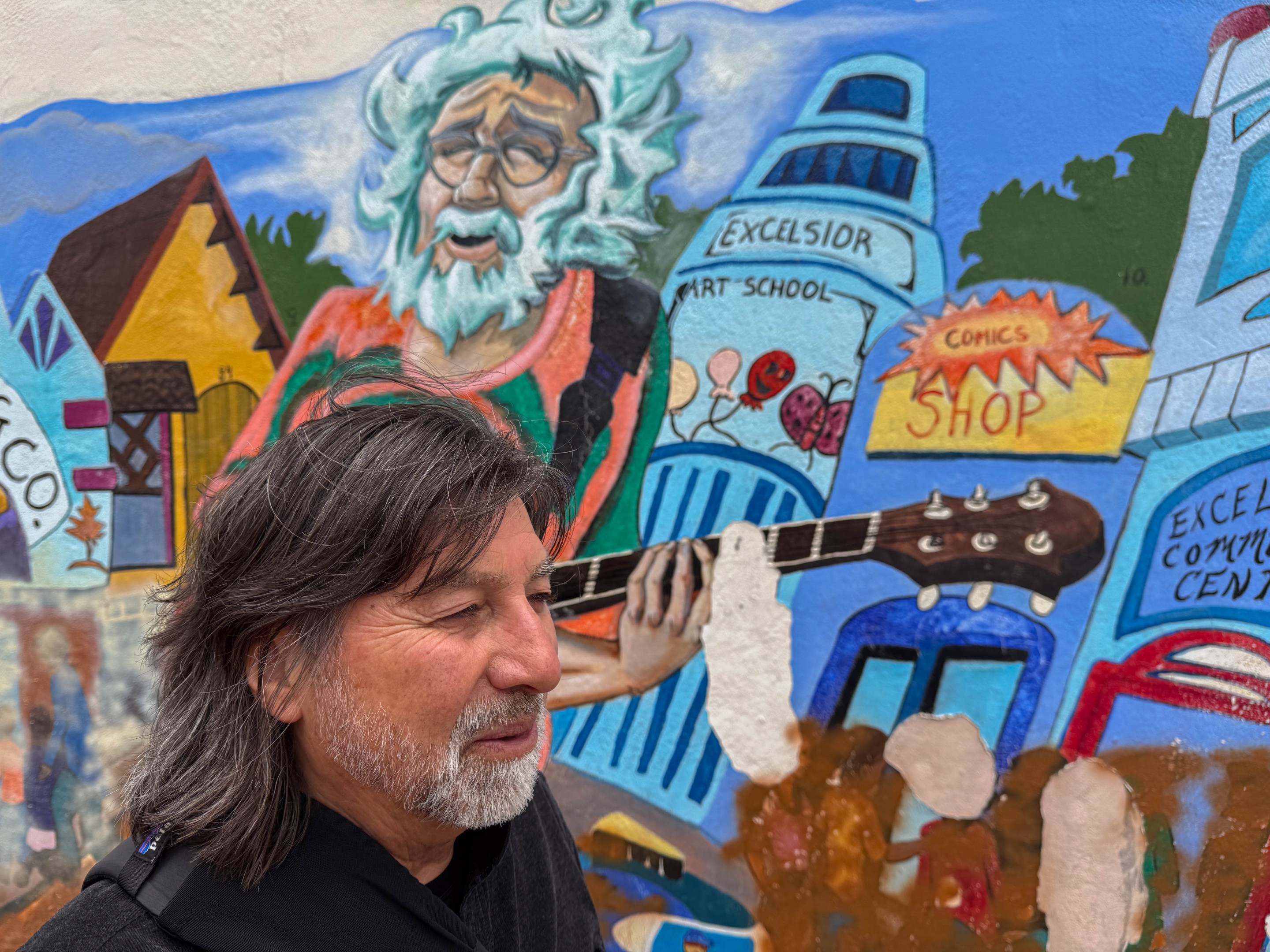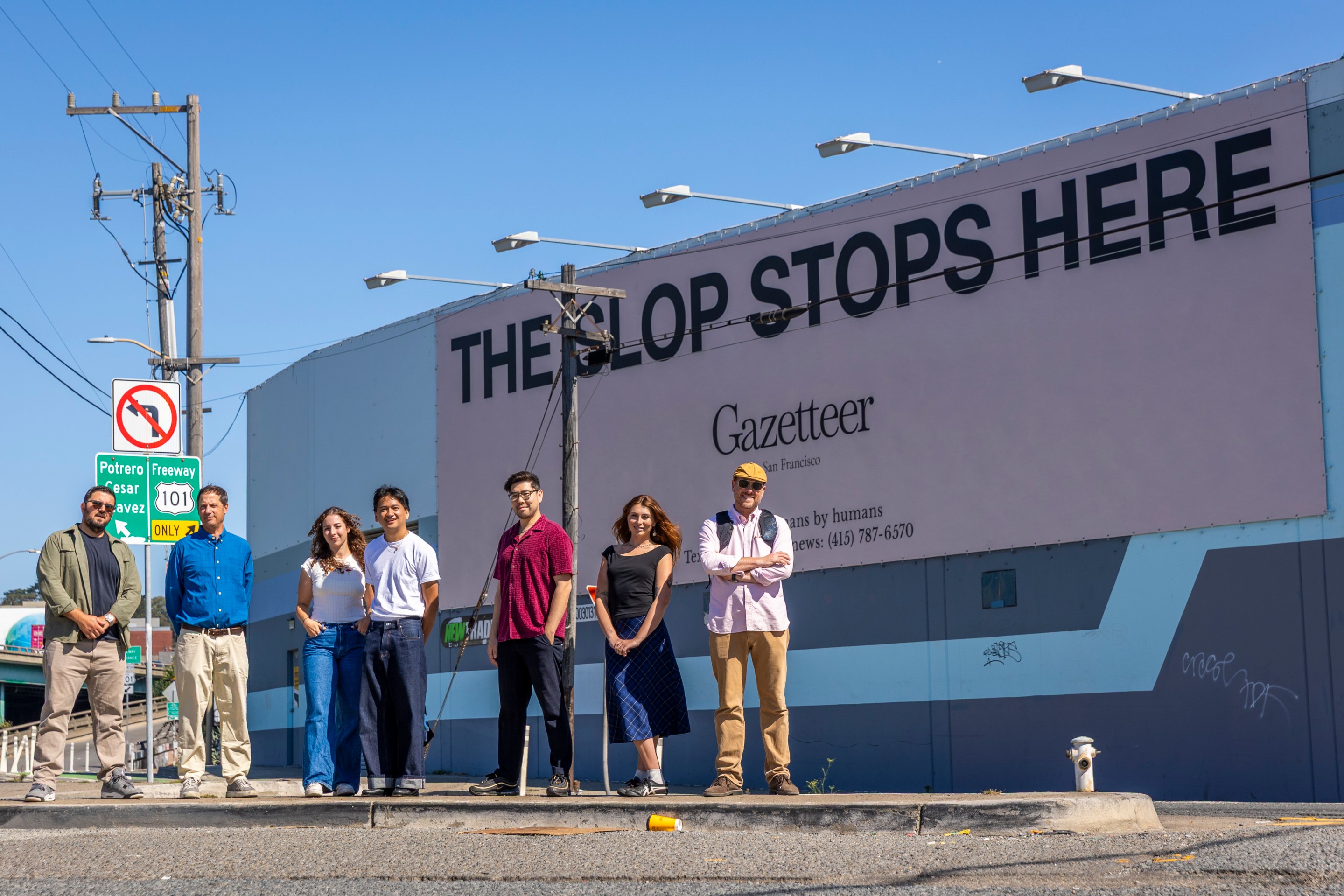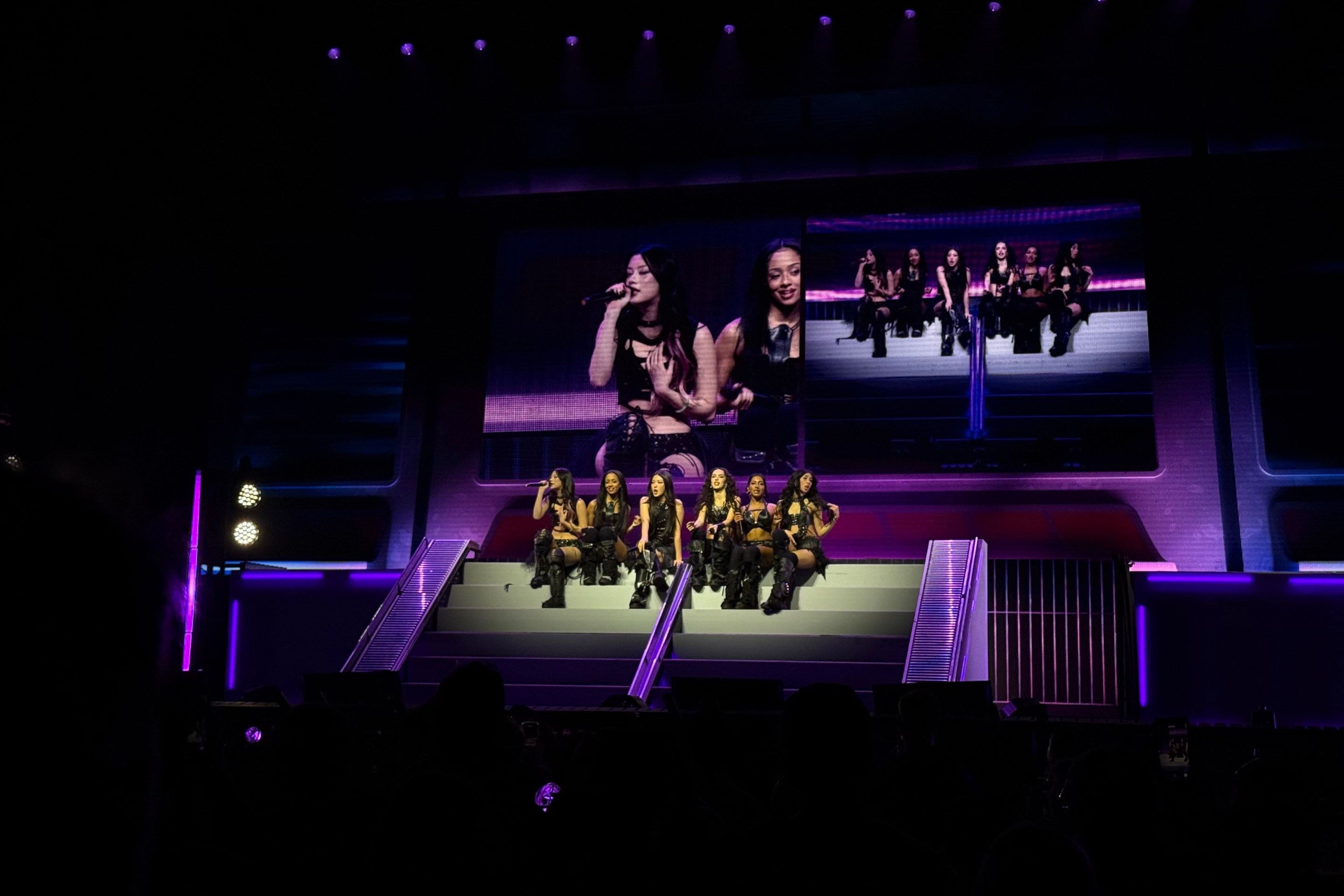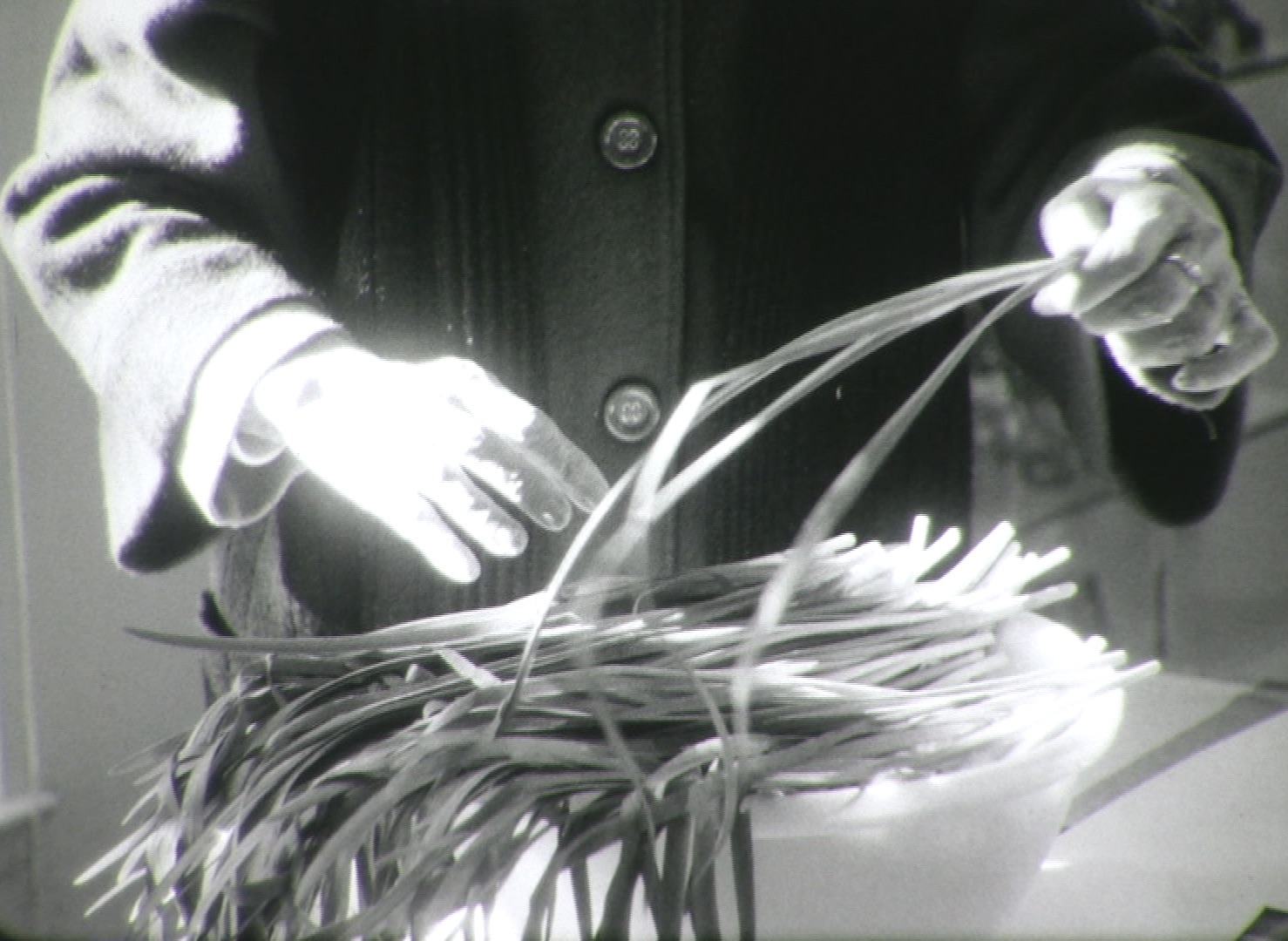In honor of Dead & Company’s three days of concerts in Golden Gate Park in August, we’re celebrating their fans with a series we’re calling &Company Town. Today: Erne Milan.
- First show: Golden Gate Park, 1967
- Number of shows: More than 50, fewer than 100
- Farthest he’s traveled for a show: Las Vegas
- Song he’s most hoping to hear: “Not Fade Away”
Erne Milan grew up in the Excelsior, the same neighborhood as Jerry Garcia. He is 72, 10 years younger than Garcia would’ve been, and didn’t know the boy who grew up to become the iconic face — and voice— of the Grateful Dead. Later in life, though, he learned that his childhood home was two blocks from 87 Harrington St. where Garcia moved in with his maternal grandparents at age five, in what Garcia described as the “devastating emotional aftermath” of witnessing his father die in an accidental drowning. In the years preceding his death in 1995, Garcia worked on a book about his Excelsior childhood called Harrington Street which was published posthumously. The stretch of Harrington he grew up on was renamed in his honor in April of this year.
Milan offered to show me around his and Jerry’s old neighborhood, and as we wandered down Mission Street off Excelsior Avenue, I watched him taking in his childhood haunts. Some things have disappeared since the 1950s, like the Italian barber who let Milan and his friends hang out and look at Playboys; some things, remarkably, remain like Ann’s Doughnut & Sandwich Shop.
Milan is a walking encyclopedia of early San Francisco rock. As we stroll, he effusively recounts local performances from five or six decades ago with such extraordinary detail, you’d think he saw them last week. His unvarnished descriptions contrast sharply with the romanticized depictions of hippies with flowers in their hair.
Up until and including 1965, “Everything was real fresh,” Milan told me. The city was still basking in Beatnik radiance, paving the way for the music, he said. He was just 12-years-old in 1966 when he and his friends walked from the Excelsior to the Cow Palace to see the Rolling Stones. THEM, Jefferson Airplane, Sopwith Camel, The Standells, and The McCoys opened the show.
The local scene took root in Golden Gate Park in 1967, with free shows first at the bandshell, and later in Speedway Meadow. That was where he first saw his old neighbor and his band. The Dead were at best a decent garage band, he told me. He caught them dozens of times in the park and at other venues before they achieved cult status and worldwide fame. At that time, the Dead relied heavily on Ron “Pigpen” McKernan (1945-1973) for vocals and the results weren’t great. “Sometimes they were off, and they were terrible,” Milan told me. “They weren’t special. It wasn’t like seeing Quicksilver with John Cipollina, or Janis Joplin, or Big Brother and the Holding Company. There were so many other, better bands,” he said. “I mean, at that time, Creedence Clearwater Revival was the band.”
Along with some of the previously mentioned bands, Milan rattled off others he saw in the park in that early era: The Charlatons, Moby Grape, the Carlos Santana Blues Band, New Riders of the Purple Sage, Sly and the Family Stone.
While the Excelsior was home, Milan spent a lot of time in Haight-Ashbury. His father owned a small apartment building there and Robert Crumb was one of his tenants. Milan still has a drawing board Crumb used when he lived in the apartment, which he got the legendary underground cartoonist to autograph. Crumb handed it over grudgingly, and told him “You know, your dad is a slumlord.”

The Haight scene took a hard, dark turn with bad drugs and bad vibes all around. By late 1967, the Summer of Love was in the rearview and Milan said it wasn’t uncommon to see people urinating and defecating in public. “It was messy,” Milan said. “There’s all this romance related to the Haight but it was gritty, man.”
By 1968, the magic had evaporated. “There was a really weird element that came in, all the lowlifes, the hyenas, real weirdos showed up on the scene.”
As Milan described San Francisco’s turn, I was reminded of how Garcia embraced darkness. In the 2017 documentary Long Strange Trip, he describes a lifelong fascination with Frankenstein; Mary Shelley and the creature are mentioned in at least one song, and Garcia frequently drew pictures of the monster. Even the name of his band speaks to that darkness. Garcia picked the name Grateful Dead randomly out of a dictionary, explaining in the film that he found it “kind of creepy, but I thought it was a striking combination of words.”
The name was “just repellent enough to sort of filter curious onlookers,” he said.
As Milan and I approached the yellow house where Jerry lived, my guide grew quiet, possibly out of respect for its current occupants, but I detected a kind of reverence. He reluctantly allowed me to take a photo of him in front of the house, and only grew talkative again as we moved away from it.
That reverence was odd considering how critical Milan was during our conversation about the Dead. Despite his complaints about the band, he seems to respect Garcia, and clearly enjoyed retracing the rock icon’s steps through their old neighborhood. Milan speculated about how they probably ate at the same late night burger joint, or might’ve taken accordion lessons at the same music studio.
“You know, for us, it was a big deal,” Milan said. “We didn’t know exactly where he grew up, but we knew he grew up in the Excelsior.” Milan proudly called Garcia a “homeboy… literally home grown.”
In 1973, Milan left San Francisco, moving to Yosemite National Park where for two decades he worked on crews building and maintaining trails. Today, he lives mostly on a piece of land he bought in Mariposa County, but he keeps a studio apartment in the Mission. He didn’t see the Grateful Dead again until the 1980s but has seen versions of the band about a dozen times since then, including Dead & Company at The Sphere in Las Vegas. This weekend he’ll see them again at Golden Gate Park.
“For me, it’s a walk down memory lane,” he said, as we did just that together. “I mean, these guys aren’t going to be around much longer… The party's gonna be over here pretty soon.”







